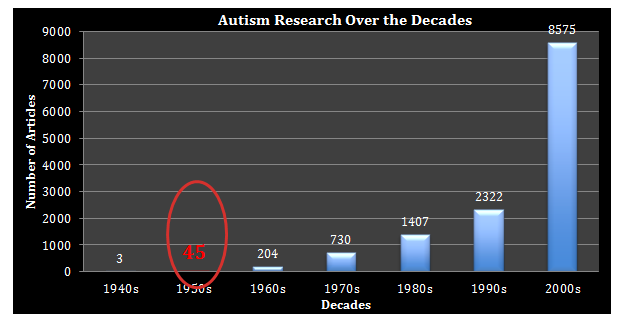The 1950s
Highlights
• Attachment theory proposed
• Both parents may affect development and cause autism

| 1940s | 1950s | 1960s | 1970s | 1980s | 1990s | 2000s |
Research in the 1950s
In the 1950s, the distinction was made between primary (infantile) autism and secondary autism (normal development followed by regression).[2] Parental factors, like negativity[3][4] and social class[2], seemed to be the causative factors in a child’s development of the disorder. John Bowlby at the Child Guidance Clinic in London developed the “attachment theory,” in which young children needed to form a relationship with at least one caregiver in order to develop proper social and emotional skills. Separation from that caregiver would lead to both short-term and long-term emotional damage and result in what Bowlby believed to be autism. In one experiment conducted by Leon Eisenberg at The Johns Hopkins Hospital, 85 of 100 fathers of children with autism were found to be cold toward the child and had a formalistic approach to marriage. But the same men had also fathered neurotypical children, suggesting that other factors gave rise to the disorder.[3] Another experiment looked at the mother and stated that her child’s autism stemmed from her negativity and her not wanting the child in the first place.[4] Also, in the 1950s, the first checklist of symptoms for autism was created to accurately diagnose the disorder.
Ross Senter, Karthik Kumar, and Sharmila Banerjee-Basu, Ph.D.
| References: |
|

